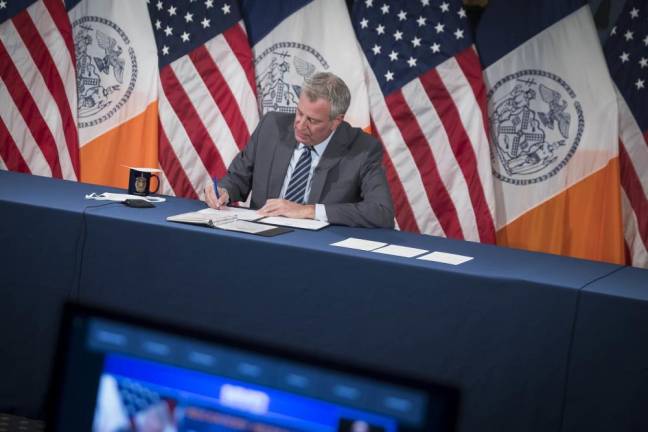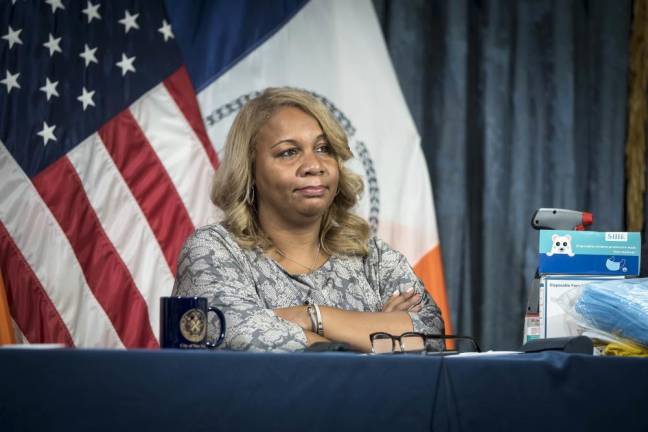A Patchwork Pandemic Economy
Financial services are doing fine, but retail, hospitality, hotels and tourism remain hard-hit


The Delta wave of COVID-19 may, just possibly, have crested in New York, but its economic disruption will be with us for many months to come.
Compared to the stomach-churning downturn of April 2020, this is more of a stutter than a plunge. The recovery that had seemed underway is shoved a bit further off.
“People were optimistic a couple of months ago,” said Arthur F. Backal, whose hospitality group runs restaurants and event venues in Manhattan. “Everyone was feeling better. We were in a good place and then the variant just unraveled things.”
What’s most striking about the New York economy in the time of the Delta variant is how uneven the impact is – reflective of, but even subtler than, the well-noted pattern that the disease disrupts in-person business while passing over, or even enabling, online activity.
Backal noted that his restaurants in residential neighborhoods, like Cellar Dog in the West Village, were doing fine, while event venues that catered to corporate use, like CNVS on West 42d Street in Hell’s Kitchen, had suffered as companies canceled office gatherings.
Kathryn S. Wylde, President and CEO of the Partnership for New York City, made a similar observation about the patchwork state of the local economy in general.
“If you measure the impact, it’s not how great it is, its how concentrated it is in the most vulnerable areas of our economy,” she said.
Many key sectors, like financial services and other white collar business, are “just fine,” Wylde noted. “It’s unfortunately just the brick and mortar segment of the economy that’s been left behind and the low wage workers who depend on the brick and mortar jobs.”
These hard-hit sectors, including retail, hospitality, hotels and tourism, are 9 percent of the city’s economy, she noted, but 20 percent of its jobs.
“It’s one of these impacts that just came down like a ton of bricks on a portion of the economy very important as a source of low wage jobs and the social infrastructure of the city,” she added.
Indeed, getting office workers back to their offices, a project delayed by the Delta variant, is probably more important economically for smaller businesses dependent on midtown traffic than it is for the major corporate employers, which generally have found ways to operate virtually since March of 2020.
“Midtown is where you still don’t have a lot of people,” Backal said.
“We are seeing a lot of postponements” of the corporate events that in better times fill his event spaces, he added.
“They Are Canceling”
This is partly because office workers are still not back to join after hour events. But the evaporation of business travel has also had a direct impact. “That’s really affecting our business,” Backal explained. “People who are hosting events that people fly in for. They are canceling.”
The revival of international and business travel, vital to the New York economy, will probably take awhile. Several major airlines said on Thursday that they had seen a significant drop in bookings in August and early September after a robust July.
However, they also told investors they were optimistic that this was a blip not a trend.
Delta airlines, the second largest carrier in and out of New York, said bookings had stabilized in the past ten days.
Wylde said she has been talking to the Democratic nominee for Mayor, Eric Adams, about one of the major obstacles to full recovery.
“We don’t have an efficient labor market in the city,” she said, noting that 462,000 New Yorkers were still out of work although there are 360,000 vacant jobs posted.
Part of the problem is information. “Small businesses who need employees and the workers they need are not connected to technology.”
Low-wage workers generally are not on LinkedIn, for example, “and small business are still putting signs in windows,” said Wylde.
Training Mismatch
But the other half of the challenge is that many of the available jobs require some level of training that the job seekers don’t have: say, a commercial driver’s license, a technical medical skill like drawing blood or even how to prepare a short order breakfast.
The Transit Authority faces a major shortage of subway and bus operators.
“We need short term upskilling to get people into the jobs that are out there,” Wylde said. “It doesn’t take a bachelor’s degree.”
This mismatch is becoming more urgent as the federal programs to supplement unemployment insurance expired in recent days.
Overall, Wylde said she was optimistic about the local economy but that the mismatch of workers and jobs “has got to be a focus.”
Mandatory Vaccination
The city’s broader economic comeback will be helped by the mandatory vaccination that both President Biden and Mayor Bill de Blasio are pushing business toward, Wylde said. The Partnership, a coalition of major businesses, has urged such mandates.
Revived economic confidence is likely to be what economists call a lagging indicator – that is, people will feel safe to resume in person activity after it has been safe for awhile.
The number of new cases of COVID-19 is on the decline in every borough of New York City except Staten Island, although the rate of new cases citywide is still “high” by the definition of the Centers for Disease Control (more than 100 new cases per 100,000 people).
Which means the danger of new surges is ever-present, particularly as a third of the city’s population remains unvaccinated. That is 2,750,000 New Yorkers, including 1,400,000 adults.
The start of in-person school this week is a major milestone in the city’s pandemic recovery, as well as a tricky moment. Vaccination among teenagers trails adults and of course kids under 12 are not yet eligible.
Los Angeles schools ordered all eligible students to be vaccinated, but de Blasio said he would not go that far.
The city has demanded that all municipal workers including teachers and school aides get vaccinated, but the unions have filed suit, not against vaccination itself but against the city’s power to discipline workers who refuse. A group of city workers have also demanded that the city drop its order that they return to the office.
The private sector’s back-to-the-office experience is instructive of how rattled people are by the entrenched nature of the pandemic. A survey in August by the Partnership for New York City found many big companies had slowed their plans for return to the office.
“44% of employers have delayed their return-to-office plans because of the recent rise in COVID-19 cases due to the Delta variant,” the partnership reported. Employers expected four out of ten workers to be back at their desks this month, the Partnership found, down from an expectation in May that six in ten would be back by now.
The overall picture for the local economy is brighter today than it was when the survey was conducted in August. Yet, while vaccination rates are continuing to climb and infection rates are on the decline, Wylde said she expected major employers would be slow to revise their back to work plans yet again.
“We’ve had so many bumps, employers don’t want to make another mistake. They down want to reverse themselves again. I don’t think you’re going to see more than half the people back in the office until the first of the year.”
“44% of employers have delayed their return-to-office plans because of the recent rise in COVID-19 cases due to the Delta variant.” Report from the Partnership for New York City